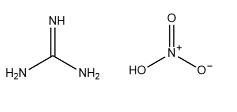CAS: 111-46-6
Alias: 2,2′-Oxydiethanol; Diglycol; Bis(2-hydroxyethyl) ether
Molecular formula: C₄H₁₀O₃
Relative molecular mass: 106.12 g/mol
【Structural Formula】![]()
1. Product Property
Diethylene glycol is a colorless, odorless, and hygroscopic liquid with a sweetish taste. It is miscible with water and many organic solvents, including ethanol, acetone, and glycerol. DEG has a high boiling point (244–245°C) and low volatility, making it suitable for high-temperature applications. It is slightly viscous and has low flammability, with a flash point of around 124°C
2. Quality Standard
| Parameter | Specification |
| Appearance | Clear, colorless liquid |
| Purity (GC) | ≥ 99.5% |
| Water content | ≤ 0.1% |
| Acidity (as acetic acid) | ≤ 0.005% |
| Density (20°C, g/cm³) | 1.115–1.120 |
| Boiling range (°C) | 244–245 |
| Residue on evaporation | ≤ 0.01% |
| Iron (Fe) | ≤ 1 ppm |
| Chlorides (Cl) | ≤ 5 ppm |
| Ash content | ≤ 0.01% |
3. Application Scope and Usage
Diethylene glycol is widely used as a solvent, plasticizer, and humectant in various industries. It is a key intermediate in the production of unsaturated polyester resins and polyurethanes. DEG is also used in natural gas dehydration, printing inks, adhesives, and cosmetics. In the tobacco and textile industries, it serves as a softening agent and conditioning agent. Additionally, it is employed in brake fluids and antifreeze formulations due to its high boiling point and hygroscopic properties
4. Package and Storage
Diethylene glycol should be stored in tightly sealed containers made of stainless steel, aluminum, or lined drums to prevent moisture absorption and contamination. It is hygroscopic and can degrade when exposed to air or strong oxidizing agents. Store in a cool, dry, and well-ventilated area away from direct sunlight, heat, and ignition sources. Avoid contact with strong acids, bases, and oxidizers。



.jpg)

